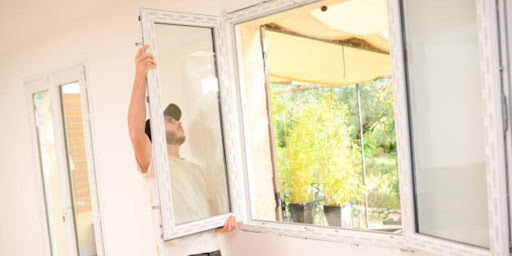Power Articles
Industry Elevating Content
Efficient Workflow - Streamlining the Window and Door Installation Process

PowerArticles
Sept. 4th, 2023
In the highly competitive industry of window and door installation, achieving efficiency is not just a desirable goal; it’s a critical necessity for businesses seeking sustainable growth and profitability. In this article, we will delve into the art of streamlining the window and door installation process, providing companies in this field with invaluable insights and practical strategies to optimize their workflow. From meticulous project planning to the adoption of advanced technologies, we will explore the key components of an efficient installation process that not only saves time and resources but also enhances customer satisfaction and strengthens a company’s reputation in a demanding market.
Assessing Current Workflow
In the realm of efficient window and door installation, the first crucial step is assessing your current workflow. This phase serves as the foundation for enhancing operational efficiency, reducing costs, and ensuring customer satisfaction.
Evaluating the Existing Installation Process:
- Identifying Bottlenecks and Inefficiencies: Start by dissecting your current installation process. Identify bottlenecks where productivity stalls and inefficiencies that increase project timelines and costs. These obstacles could range from logistical issues to miscommunication among teams.
- Collecting Data on Project Timelines and Costs: Quantifying your current workflow is essential. Gather data on project timelines and associated costs. By doing so, you can pinpoint areas that require improvement. Analyzing these metrics allows you to set realistic benchmarks for enhanced efficiency.
Gathering Feedback from Installation Teams and Workers
Input from the frontlines is invaluable. Installation teams and workers are the experts who encounter challenges firsthand. Collect their feedback regarding the existing workflow. Their insights can uncover hidden issues and provide innovative solutions.
Understanding the Unique Challenges in Window and Door Installation
Window and door installation presents unique challenges, from weather-dependent factors to varying architectural styles. Understanding these idiosyncrasies is paramount to crafting tailored, efficient solutions.

Planning for Efficiency
Planning for Efficiency in window and door installation is a crucial aspect of streamlining the entire process. It involves setting clear objectives and developing a well-defined workflow plan to achieve maximum productivity while minimizing costs and risks. Here’s how companies in this industry can achieve efficiency through effective planning:
Setting Clear Objectives for Process Improvement
- Reducing Installation Time: One of the primary objectives should be to minimize the time it takes to complete a window or door installation. This can be achieved through careful planning, worker training, and the use of efficient tools and techniques.
- Minimizing Material Wastage: Efficiency also entails using materials optimally. Companies should strive to reduce material wastage by accurately measuring, ordering, and managing supplies. This not only saves costs but also reduces environmental impact.
- Enhancing Worker Safety: Efficiency planning should prioritize worker safety. Implementing safety measures and providing training can minimize accidents and downtime, ensuring a smooth workflow.
Developing a Well-Defined Workflow Plan
- Creating Standardized Installation Procedures: Standardized procedures help ensure consistency and quality in installations. By documenting and training employees on these procedures, companies can reduce errors and increase efficiency.
- Allocating Resources Effectively: Efficient planning involves allocating human and material resources where they are needed most. By matching skills to tasks and ensuring timely availability of materials, companies can avoid delays and bottlenecks.
3. Implementing Quality Control Measures: Efficiency should not come at the cost of quality. Incorporating quality control measures into the workflow plan ensures that installations meet high standards, reducing the likelihood of callbacks and rework.

Embracing Technology
In the realm of efficient window and door installation, Embracing Technology has emerged as a pivotal factor for success. By leveraging cutting-edge tools and software solutions, companies in this industry can significantly streamline their workflow and enhance overall productivity.
A. Utilizing software and digital tools for project management is paramount.
Project scheduling and tracking software enables meticulous planning and execution. Teams can effortlessly coordinate tasks, allocate resources efficiently, and keep clients informed about project milestones. Inventory management systems play an equally crucial role, ensuring that materials are readily available when needed, minimizing delays, and reducing unnecessary costs.
B. The integration of 3D modeling and CAD software has revolutionized planning and design.
These tools allow companies to create precise, virtual representations of window and door installations. By visualizing projects before implementation, potential issues can be addressed proactively, leading to improved accuracy and reduced rework.
C. Implementing IoT (Internet of Things) devices for real-time monitoring and diagnostics has become increasingly prevalent.
These devices enable remote monitoring of windows and doors post-installation, providing valuable data on performance and maintenance needs. Predictive analytics can identify potential issues before they escalate, reducing downtime and enhancing customer satisfaction.

Training and Skill Development
Efficient Workflow in window and door installation hinges on the competence of your workforce. To ensure a smooth and productive process, investing in employee training and skill development is paramount.
Investing in Employee Training and Development
- Specialized Installation Techniques: To streamline the installation process, employees should be well-versed in specialized techniques for various types of windows and doors. This includes knowledge of different materials, sizes, and styles, as well as the ability to adapt to unique installation challenges. Providing comprehensive training in these areas ensures that your team can tackle any project with confidence, reducing delays and errors.
- Safety Protocols and Certifications: Safety should always be a top priority. Training employees in proper safety protocols and ensuring they obtain relevant certifications not only protects your workforce but also minimizes potential liabilities. A well-trained team is less likely to encounter accidents or make costly mistakes, contributing to an efficient workflow.
Cross-Training to Ensure a Flexible Workforce
To enhance workflow efficiency, cross-training your workforce is a strategic move. Cross-training allows employees to acquire skills beyond their primary roles, making them versatile assets in your installation projects. For example, a window installer who can also handle door installations or assist in other areas creates a flexible workforce capable of adapting to changing project demands.
Encouraging Continuous Learning and Adaptation
Efficiency in window and door installation is an evolving process. Encourage your employees to engage in continuous learning and stay updated with industry trends and emerging technologies. Regular training sessions and access to resources for skill enhancement enable your team to adapt swiftly to new challenges and incorporate innovative practices, ultimately streamlining the installation process.

Material Management
Effective material management is a critical component of streamlining the window and door installation process. This subtopic delves into the strategies and practices that can help companies in this industry optimize their workflow and resource utilization.
A. Efficient Procurement Strategies
- Bulk Purchasing: Investing in bulk purchasing of materials such as windows, doors, and associated hardware can lead to significant cost savings. This strategy minimizes per-unit costs and reduces the need for frequent reordering, streamlining the procurement process.
- Supplier Partnerships: Developing strong partnerships with reliable suppliers is essential. Collaborating closely with suppliers can lead to better pricing, timely deliveries, and access to premium materials, ensuring a smoother workflow.
B. Reducing Material Waste Through Accurate Measurements and Cutting
Precision is key in preventing material wastage. Accurate measurements and cutting techniques can substantially reduce the need for excess materials. This not only saves costs but also minimizes environmental impact.
C. Proper Storage and Organization of Materials On-Site
Efficient storage and organization of materials at the installation site are pivotal. Organized storage ensures quick access to the required materials, preventing delays in the installation process. Properly stored materials are also less prone to damage, preserving their quality.

Published By
PowerArticles
Sept. 4th, 2023